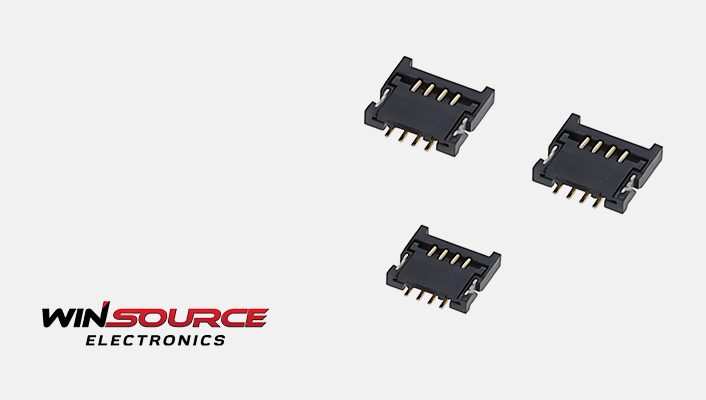
In industrial control and precision measurement systems, stability and accuracy are critical to overall performance and reliability. As a core component of signal conditioning circuits, the operational amplifier’s precision, stability, and power characteristics play a decisive role. This article explores how the industrial-grade quad op-amp LT1014ISW#PBF serves as a key building block for high-stability measurement systems.
1. Key Features of LT1014ISW#PBF
The LT1014ISW#PBF is a low-power, precision quad operational amplifier with the following standout features:
- Input Offset Voltage: Typical 60µV, maximum 150µV; low temperature drift, ideal for high-precision applications.
- Input Bias Current: Only 15nA, enabling accurate interfacing with high-impedance signal sources.
- Operating Current: Total supply current of 350µA (for all four channels combined), ensuring ultra-low power consumption.
- Output Drive Capability: Each channel can source/sink up to 20mA, supporting a wide range of load conditions.
- Wide Supply Voltage Range: Operates from 4V to 44V, offering great flexibility in system design.
- Slew Rate: 0.4V/µs, suitable for moderate-speed signal response.
- Gain-Bandwidth Product: 1MHz, meeting most industrial measurement and signal processing requirements.
- Package: Wide-body SOIC surface-mount package, aiding in thermal management and automated assembly.
- Operating Temperature Range: -40°C to +85°C, covering typical industrial environments.
- Product Status: Active, with stable supply—ideal for mass production projects.
2. Technical Advantages for Enhancing System Stability
1) Precision and Low Drift Signal Conditioning
High-stability measurement systems are highly sensitive to signal drift. The LT1014ISW#PBF’s ultra-low input offset voltage and temperature drift characteristics significantly reduce reference drift errors. Even in harsh industrial environments with wide temperature variations, it ensures long-term consistency and reliability in measurements.
2) Excellent Noise Suppression
Featuring outstanding low-frequency noise performance, with a typical voltage noise density of just 15nV/√Hz, the LT1014ISW#PBF effectively suppresses noise accumulation during signal amplification—ensuring clean and accurate readings.
3) Power Efficiency
With a total supply current of just 350µA for four channels, the LT1014ISW#PBF is perfectly suited for battery-powered portable devices—supporting long-term high-accuracy measurements without frequent battery replacements.
4) Wide Voltage Range for System Compatibility
Supporting a broad 4V to 44V power supply range, the LT1014ISW#PBF is adaptable to various power architectures, making it easy to integrate into both legacy and modern systems.
3. Reference Application Designs
Here are several typical measurement system designs based on the LT1014ISW#PBF:
1) High-Precision Sensor Signal Amplification
Ideal for thermocouples, pressure sensors, or bridge circuits, the LT1014ISW#PBF ensures precise, low-drift front-end signal amplification—minimizing system errors and enhancing measurement accuracy.
2) Precision Instrumentation Amplifier Configuration
Paired with a precision resistor network, the LT1014ISW#PBF can be configured into a low-noise instrumentation amplifier, boosting common-mode rejection and improving overall interference resistance.
3) Data Acquisition and Analog Filtering
The LT1014ISW#PBF is well-suited for implementing low-pass or active filters, effectively reducing high-frequency noise and interference—ensuring high-quality signals before ADC conversion.
4. Real-World Application Case Studies
In industrial automation, precision temperature measurement instruments powered by the LT1014ISW#PBF have shown over 60% reduction in long-term drift errors, along with nearly double the battery life—leading to significantly lower maintenance costs.
Meanwhile, in the medical field, a portable blood pressure monitoring device manufacturer adopted the LT1014ISW#PBF to enable long-duration, high-accuracy monitoring. As a result, the device delivered improved measurement reliability and consistency, earning strong market feedback post-launch.
Furthermore, in environmental monitoring, a water quality monitoring system leveraged this op-amp for signal processing, enhancing long-term measurement accuracy and stability, while also reducing on-site maintenance frequency and overall operational costs.
5. Design Considerations and Best Practices
Place the amplifier close to the sensor on the PCB to minimize signal degradation due to long-distance transmission.
Ensure well-regulated and filtered power supply designs to fully leverage the op-amp’s performance.
Use precision resistors for gain setting to minimize additional offset voltage errors.
With its excellent precision, low power consumption, wide supply voltage support, and industrial-grade stability, the LT1014ISW#PBF is an ideal choice for building high-performance, reliable measurement and control systems. It is widely applicable in industrial automation, medical devices, instrumentation, and beyond.
For a stable and reliable supply of LT1014ISW#PBF, WIN SOURCE offers ready-to-ship inventory, fast delivery, and professional technical support—empowering your projects with efficiency and confidence.

COMMENTS